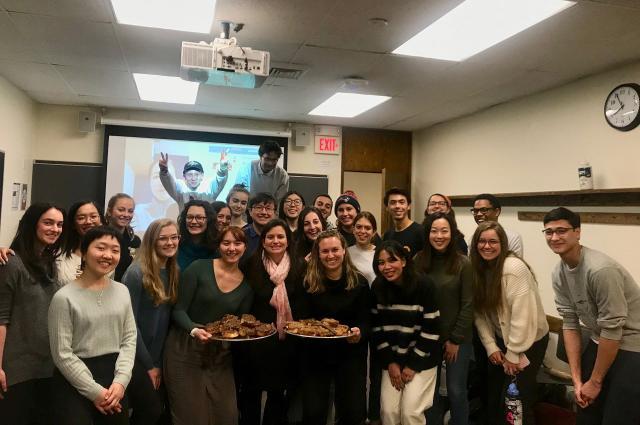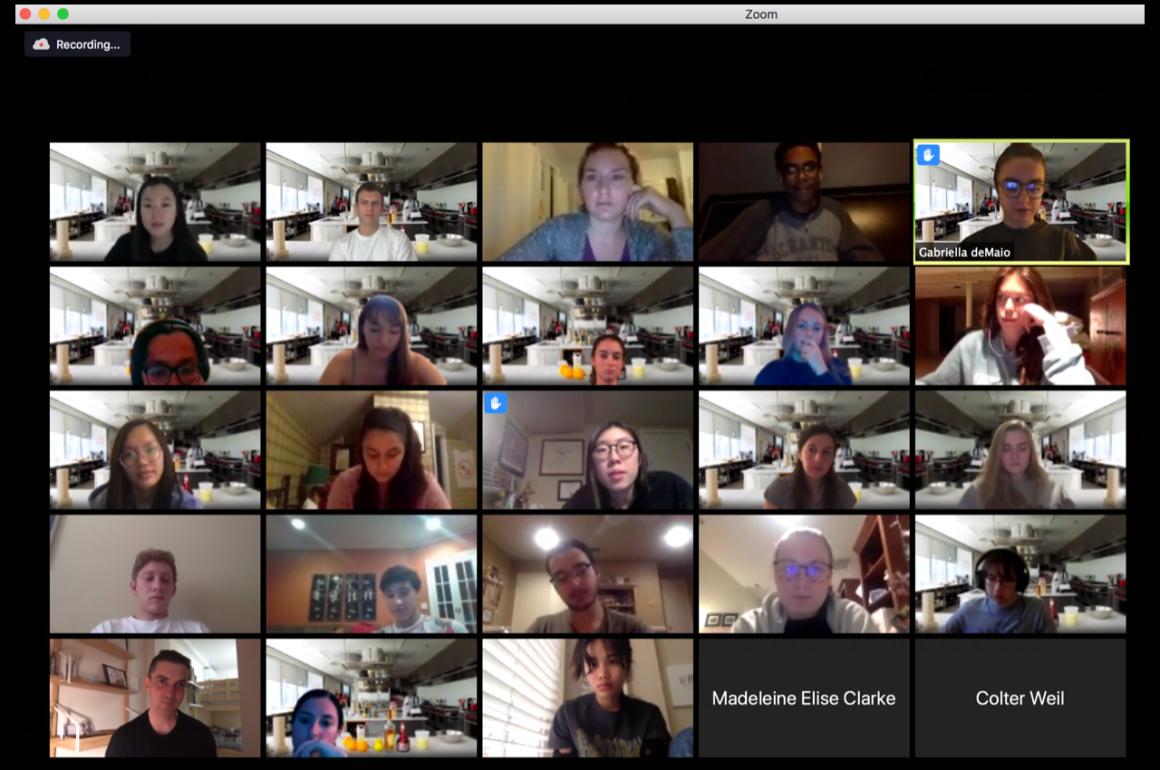An Insider's Guide to the World of Food Media

Earlier in the semester, students participated in their first food media case study with chef and owner of Flour Bakery + Cafe, Joanne Chang (pictured on video behind the group).
Swidey is an Emmy- and James Beard-nominated producer of national cooking shows and a food writer, as well as a graduate of the Culinary Institute of America and chef, so she has extensive experience in both food and media. However, Swidey explained that when she graduated from Tufts, there were few resources and opportunities to work in the culinary arts. “Over the past two decades, the Internet and social media have profoundly changed the way people engage with food.” In that time, she’s found that more and more Tufts students contact her for advice on working in the food world. She decided to teach this course so students can “embrace and celebrate food in a more meaningful way,” and hopes that students will come away from the class as “smarter consumers of food media.”
To this end, Swidey has devised interdisciplinary, hands-on activities for each class. Every week, a pair of students selects, researches, and presents on “The Anatomy of an Edible Media Sensation,” which involves taking a deep dive into a dish, ingredient, or product that got a big lift in food media. For example, in their first class, Swidey presented on the sticky buns created by chef and owner of Flour Bakery + Cafe, Joanne Chang, which were featured on Throwdown with Bobby Flay in 2007. Chang recorded a video for students describing “how one prominent food media appearance helped change the trajectory of [her] business,” which students watched while eating sticky buns that Swidey had made following Chang’s recipe.
In another activity, students used PTC strips — typically used in biology classes for genetics studies — to discover whether they are a supertaster, a taster, or a non-taster. Swidey explained: “While it may sound super to be a ‘super-taster,’ people in this classification actually over-perceive bitter flavors...and enjoy vegetables and spicy food less, while non-tasters tend to like everything since bitter things don’t taste that bad to them.” It’s a good thing those sticky buns weren’t bitter!
Swidey’s course embodies what she calls the “foodie’ culture at Tufts,” and provides students with new avenues to dig into the practice of food media, as well as digging into new foods.
As Tufts has transitioned to an online learning format, Swidey has found ways to preserve the essence of her class. She described feeling fortunate that the class can still conduct video analyses and student presentations through Zoom — although it’s too bad that students can’t share the snacks they make each week! They are addressing the fact that “food and food media are forever changed” by researching and analyzing food media platforms covering COVID-19 related issues in the food and beverage industry. Guest lecturers continued to present to the class through Zoom. Annie DiGregorio, an Emmy Award-winning producer and brand expert who is now the executive producer of Original Video at Meredith Corporation, was the first to do so on March 30th.
Swidey recalls one really great, uplifting moment during DiGregorio’s visit. “She’s in New York City and at 7 p.m., you could hear all the people in the neighborhood applauding health care workers during their hospital shift change.” And although students are no longer able to share an in-person meal, they can still break bread.
Students meeting with Annie DiGregorio on Zoom.
About the Author
Zoe Leaf is a senior from New York City studying Child Study & Human Development and Food Systems & Nutrition. On campus, aside from working at the Ex College, she does research at the Child Health Equity lab, is a Co-Chair of the DREAM mentorship program, and is a leader with Peer Health Exchange and with FOCUS. When she's not running around campus, she can be found reading novels, watching Mad Men, and taking care of her many plants.
